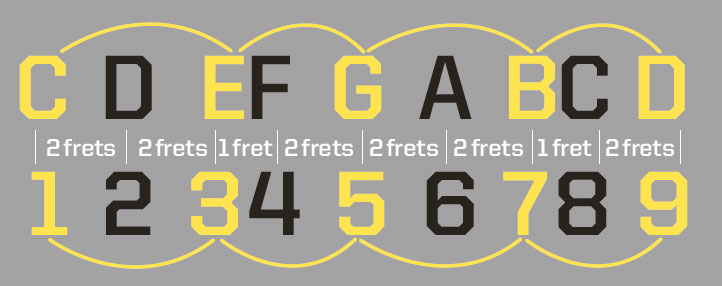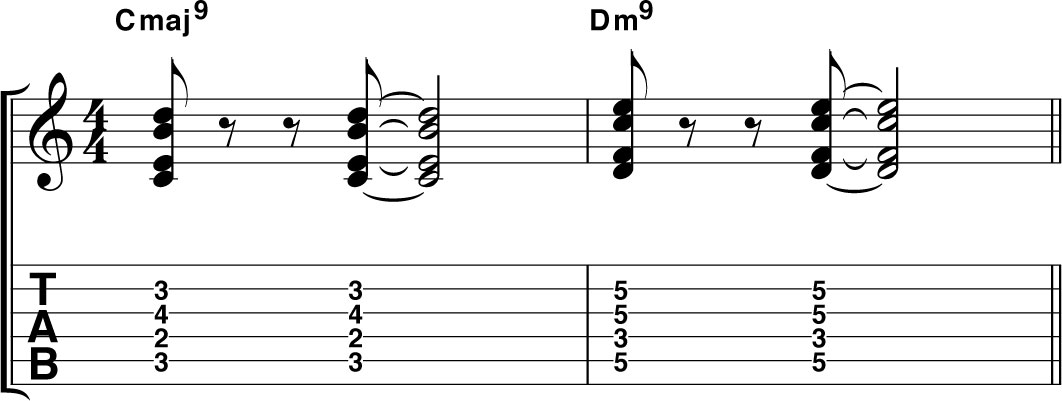Guitar skills: Learn extended chords with our easy lesson
Play the essential sounds of jazz and funk with 7, 9 and 11 shapes

Guitar skills: Major and minor chords (called ‘triads’) are made of three major scale notes. Triads are made of stacked 3rd intervals - simply play a note, miss the next note, then play the following note to make a 3rd. But you can extend them into another octave.
Just continue adding 3rds to build some richer-sounding chords - the kind favoured by jazz and funk players like Nile Rodgers.
You can add any major scale note to a triad and you’ll always be in key. Some notes sound better than others, but, of course, trust your ear. Read on as we look at some extended chords...
1. Triads and 7th chords

A major triad contains the first, third and fifth notes from the scale. To make a 7th chord you add the seventh note of the scale. These four notes give you the major 7th chord. Repeat this process on every note of the scale to create other 7th chords, for example Dm7 (D F A C), Em7 (E G B D) and so on.

Cmaj7 and Am7 are both 7th chords (C E G B and A C E G) in the key of C, even though the notes fall in a different order (C B E G and A G C E) in these shapes.
2. Extending into another octave

If you continue adding 3rds you will quickly reach the end of the scale. At this point the notes are repeated an octave higher. The numbers continue to ascend but the note names restart on the root note. We’ve only got space to go up to D (the 9th), but chords use 11ths (F) and 13ths (A) too.

The G note is missing from our Cmaj9 chord (C E G B D) to make the shape playable. Built on the second note of the C major scale, our Dm9 (D F A C E) lacks its A note.
Want all the hottest music and gear news, reviews, deals, features and more, direct to your inbox? Sign up here.
3. Using diatonic extended chords
This example shows a range of different chords that can be created just from the notes in the C major scale. There’s quite a lot to work on here and some of the shapes may be new to you, so play slowly through the progression before trying them out over our short backing track.
Check out more chord lessons
Total Guitar is Europe's best-selling guitar magazine.
Every month we feature interviews with the biggest names and hottest new acts in guitar land, plus Guest Lessons from the stars.
Finally, our Rocked & Rated section is the place to go for reviews, round-ups and help setting up your guitars and gear.
Subscribe: http://bit.ly/totalguitar

